My Interview with Jules Dervaes of The Path to Freedom: The Modern Urban Homestead
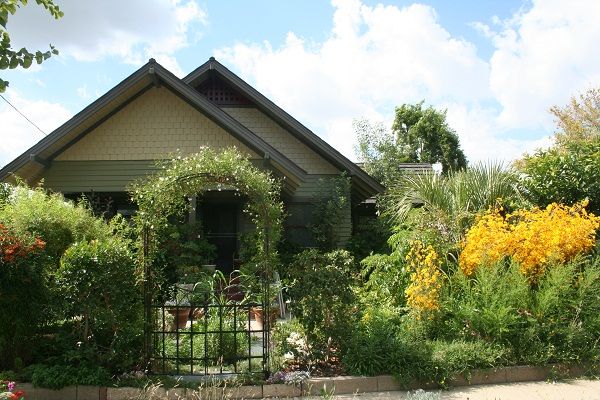
Many of you who follow this blog or actively participate on the MHK Facebook Page probably remember my several mentions of the Dervaes Family, the nearly self-sufficient Californians who garden just about every inch of their modest Pasadena home and even sell their harvest to local chefs and restauranteurs.
I first learned about Jules Dervaes a few years ago while watching a clip on ABC Nightline. I was instantly intrigued by this interview which showed how he gardened just about every inch of his front and back yard with edible goods and how he got his three grown children so actively involved in the lifestyle of this very modern, urban, self-sufficient homestead.
I was recently fortunate enough to discover the Urban Homestead‘s online activity: a website, blog, their tweets on Twitter and connection with the public on Facebook . To that end, I’m so excited and grateful to be able to bring you my own interview with Jules Dervaes, the patriarach of this urban homestead, whom we can learn so much from about living a life free of the constraints of super-consumerism and significantly reduce our carbon imprint on the earth, without sacrificing happiness and wholesome living.
I hope you’ll read the entire interview all the way through, as it contains wonderful and insightful responses to the questions I thought you might ask him yourself. It’s exciting and liberating to learn how to live off the big or small space you occupy right now. I’m learning so much every time I re-cap the interview.
After reading, do you think you could do what Mr. Dervaes has done? Has it inspired you to even want to do what he’s done? Please do leave your comments at the end of this post and let’s start a community discussion on living a more eco-friendly, self-sufficienct lifestyle.
Here are the questions & responses:
From what I’ve read about you, it seems as though the introduction of genetically modified food was the real catalyst for you beginning the urban homestead at your Pasadena, California home. Was this the case? If so, why was this such an important turning point for you?
The creation of the Path to Freedom Urban Homestead was the result of my long-held beliefs in living simply and caring for the environment. GMOs were the catalyst for my becoming a full-time homesteader in the city in 2001, but my journey began long before that in the 1970s. (I have written in more depth about those early years in Mother Earth News magazine.
It was in 2000, when I was living in Pasadena, that, in an angry reaction to the news that U.S. biotech firms were bent on introducing GMOs into the food system, I took the next radical step towards becoming an urban pioneer. I had to protect my family from this mad experiment by providing them with the real food we could grow ourselves. I was shocked and incredulous—and felt helpless—that I was at the mercy of such corporate irresponsibility. This threat forced me to take action. I feared for my children: What kind of world was I handing down to them? That became the turning point for me when “enough was ENOUGH!”
Can you describe for our readers what exactly is an urban homestead?
A suburban or city home on a fraction of an acre where an individual or family lives by principles of low-impact, sustainable self-sufficiency through activities such as gardening for food production and preservation, cottage industry, extensive recycling, and generally simple living—including conservation measures and an old-fashioned DIY self-reliance.
Most people feel overwhelmed by the concept of having a small garden, let alone a larger one such as what you have on your property? What advice can you give to first-time urban homesteaders who may think it’s “too much work”?
Every project will, at the start, entail more work and time just because it is new. It took me 25 years to get my garden to this stage, but I began by planting just a few plants in a small space.
So, for those who feel overwhelmed, pick out vegetables or herbs you would enjoy eating, that are hardy and do well even for rookie green thumbs. Ask your local nursery staff which ones are best for your area and season of year.
Make sure you have good soil to start with. If not, purchase bags of organic compost to amend it. “If you don’t have healthy soil, you don’t have healthy plants.” Feed the soil first, with a regimen that includes mulching and compost. Any leafy greens can be grown easily in containers so you can start getting good results right away.
What did you do to get your family so intricately involved in homesteading–and enjoying and believing in this type of lifestyle?
I followed my father’s example. He had his children work alongside him doing yard work. We helped him clear a “jungle” on our Tampa, Florida property. By working together as a family, my father was setting an example, imprinting his work ethic on me, and so I did the same with my children. By their being involved when they were young, my children were able to experience firsthand, for themselves, the rewards of this way of life. After a while, having experienced success, they came to realize the potential of homesteading.
When they see what is happening in our world and hear about the critical problems we face, they don’t feel helpless because they are doing something about those problems. They have an immediate response to troubling world news—something they can do with their hands versus just talking and worrying about global conditions but not getting anywhere. Here they feel empowered. And you can’t beat empowerment as a motivator.
Aside from growing and maintaining the garden itself, what else are you and your family doing to live off the land?

After food, our family tackled the areas of energy usage, transportation, water and waste, plus established an extensive outreach work online and in person. We continue to hone our back-to-basics skills. Recent projects include setting up a backyard aquaponics system (fish farming and plants) and re-using our greywater from the bathtub for below-ground irrigation.
What challenges do you face having the urban homestead?
Lack of space! But that obstacle has led us to become inventive about using every square inch of space available for growing food—horizontal AND vertical. We still struggle to find enough space for working on additional projects and for storage.
Water is the most crucial challenge for living off the land in an urban setting with a semi-arid climate. We will be dependent on the city’s water supply unless we receive the blessing of rain in due season.
Today’s unpredictable weather patterns with extremes of temperatures have added a whole other level of uncertainty to growing our own food in recent years.
What challenges, if any, do you anticipate in the future with regards to your urban homestead?
In a word, GROWTH. My adult children need to develop their own homesteads, and this expansion cannot be done here in city. We have plans to establish a self-sufficient, agrarian community based on the homestead model that I have developed and are looking worldwide for possible locations.
 Can you give our readers an example of the types of animals, plants, vegetables and edible flowers you grow on your land?
Can you give our readers an example of the types of animals, plants, vegetables and edible flowers you grow on your land?
Before getting any animals, make sure you first check with your city’s or county’s codes. We have taken great pains to make sure our animals are well cared for and don’t cause any nuisance for our neighbors. On the homestead we raise chickens, ducks, goats, bees, worms and, now, fish. This work gradually evolved over a ten year period.
In the course of a year, the garden grows over 350 varieties of vegetables, herbs, fruit, and edible flowers. We try to find heirloom varieties. With the summer crops coming on, we will soon be enjoying tomatoes, peppers, eggplant, cucumbers, green beans, apples, blueberries, plus common herbs and also edible flowers, such as nasturtiums and dianthus.
What advice can you give to apartment, condo and townhouse dwellers with very little (if any at all) space to grow edibles?
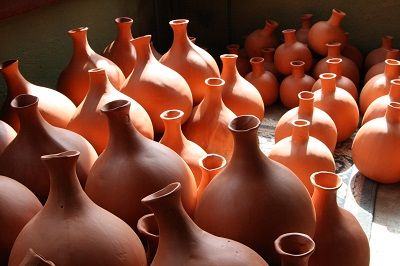 Self-watering containers are good for balconies: they don’t leak, and they have a water reservoir. Neighbors can get together and share small spaces. Other people cultivate a small piece of their rental property—take space you don’t think you have, and turn it into a pint-sized garden or odd-shaped bed, for example, long and narrow against a fence. And community gardens are becoming more popular, too, for people who don’t have their own land.
Self-watering containers are good for balconies: they don’t leak, and they have a water reservoir. Neighbors can get together and share small spaces. Other people cultivate a small piece of their rental property—take space you don’t think you have, and turn it into a pint-sized garden or odd-shaped bed, for example, long and narrow against a fence. And community gardens are becoming more popular, too, for people who don’t have their own land.
I advise people that whatever your situation, return to the old ways of doing things and find at least one alternative to the modern way. If you can’t grow it yourself, buy it at a farmer’s market rather than the grocery store. Don’t buy processed food. Cook fresh foods yourself rather than eating out.
What advice can you give to folks living in areas of the country and the world where edibles cannot be grown all year round? Is it still possible to have an urban homestead in climates other than southern California?
In colder climates, people can extend the growing season by using cold frames, row covers and greenhouses, as well as over-wintering certain root crops. Yes, we have a long growing season, but we also are at the mercy of the weather. Southern California is not a paradise—we have hot summers and not much rainfall. One year, we lost almost all of our tomato crop (and, thus, a major portion of our summer cash intake). Our climate is challenging in its own way, and the water crisis is only worsening across the entire southwestern U.S.
If we had a shorter growing season, then we would need a lot more land. Learning how to preserve the harvest becomes even more important when you can’t grow year round.
Do you really generate 6,000 lbs. of edibles on 1/10 of an acre (4300 square feet)? I understand you sell your surplus edibles to local chefs to serve in their restaurants as well as to neighbors? Has the current economic situation reduced or increased interest in your fresh edibles?
We grew 6,000 pounds in our two best years. In recent years, due to a number of factors, we are averaging over 5,000 pounds annually. Our outreach has expanded exponentially, which takes more and more time away from the garden. One year, we re-roofed the house, doing much of the removal and prep work ourselves, so we neglected the garden. Finally, the extreme changes in weather have affected our harvests in the last three years.
Yes, some restaurants and caterers have reduced their produce orders as the economy has impacted their businesses. However, we have seen an increase in the number of individuals buying our produce.
If people visit Pasadena, which restaurants would they be able to visit where they could eat your edibles, particularly the salad that’s named after you?
Two restaurants in Pasadena that offer DerVaes Gardens mesclun salad mix are Marston’s and Elements. Individuals can also order produce in advance and pick it up from our front porch “farm stand.”
Is your home open to visitors for tours? Do you sell garden design plans for the urban homesteader?
The urban homestead is a viable working project used to provide our income from our garden. It is not for demonstrations or public exhibits; therefore, we are not set up for drop-in visits. Because urban homesteading is gaining in popularity, we are unable to handle all the tour requests, so we have focused on bringing the urban homestead to you online with thousands of photos and dozens of videos.
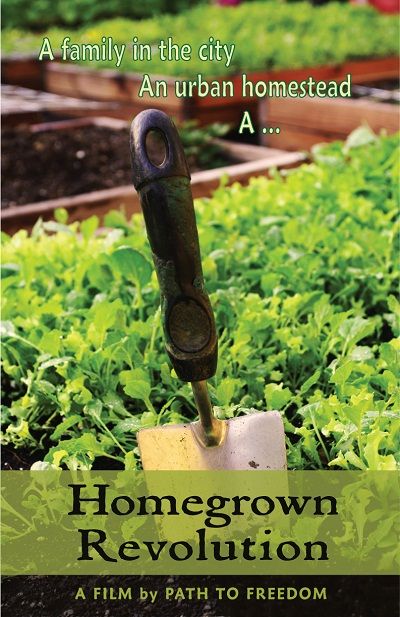 We also produced an award-winning, short documentary, Homegrown Revolution, which is inspiring others around the world to grow their own food. Because people face specific challenges in different areas of the world, we established Freedom Gardens, a free, online social networking site where backyard gardeners can help each other as neighbors did in times past.
We also produced an award-winning, short documentary, Homegrown Revolution, which is inspiring others around the world to grow their own food. Because people face specific challenges in different areas of the world, we established Freedom Gardens, a free, online social networking site where backyard gardeners can help each other as neighbors did in times past.
We do have the layout of our yard on paper, and we are constantly updating it. Every planting season (at least twice a year), my son, Justin writes down on this schematic what he planted in which bed and how the entire yard is laid out. After many years of doing this, we have created an invaluable resource of record-keeping. However, the layout of our yard and this information isn’t available to the public. To put these significant materials in book form would be labor intensive and take us away from the garden work. The urban homestead is the life’s work and investment of the Dervaes family, built up with hard-earned experience and tested over decades.
 What inspires you to keep doing what you’re doing?
What inspires you to keep doing what you’re doing?
On just a basic level, it is my family’s business, our source of income. And the incredible freshness and flavor of the food cannot be beat. On a deeper level, I find a purpose in doing something meaningful and am motivated by the challenge of learning new things. Also, I take my responsibility seriously as a parent to provide for my family’s future.
I feel it is truly a matter of our survival. Yet, my family and I have been blessed to do this creative work surrounded by so much beauty.
Do you think it’s possible for every American to live like you do? Do you think it’s imperative at this juncture when economic, agricultural and environmental crises loom, that every American live the way you do?
One day there will be a time when people will have to make drastic changes. Making some of those changes now reduces the shock of doing it all at once, later. Because Americans consume the most, they will be the most shocked when the resources are no longer there. As the world situation worsens, people will need to commit fully to a different, non-mainstream way of life. You can start a project of change whatever the circumstances, but you cannot keep straddling two positions, occupying the middle ground. A step backwards truly is progress when you choose a path away from the cliff. . . .
Any last thoughts, comments or projects you are involved in that you would like our readers to know about?
What Path to Freedom represents is a lifestyle change, a way to transition from this system to a better one. This difference sets us apart from other projects because we have created a real model where the tangible results of our changes simply speak for themselves. We are living it.
Future plans include the establishment of “Homesteadville,” a village-scale project that takes our practical, personal solution to the next level.
Find the Dervaes Family and the Urban Homestead online
http://www.UrbanHomestead.org
http://www.FreedomGardens.org
http://www.FreedomSeeds.org
http://www.PeddlersWagon.com
http://www.HomegrownRevolutionFilm.com
http://www.DerVaesGardens.com
http://www.JulesDervaes.com
Connect Socially with the Dervaes Family
http://twitter.com/urbanhomestead
http://www.facebook.com/dervaes
http://www.facebook.com/pathtofreedom
http://www.myspace.com/pathtofreedom
http://www.youtube.com/dervaes
1 Copyright © Jules Dervaes 2010 June 15, 2010
Related Posts
Summer Mediterranean Salad with Citrus, Dates & Nasturtium Flowers


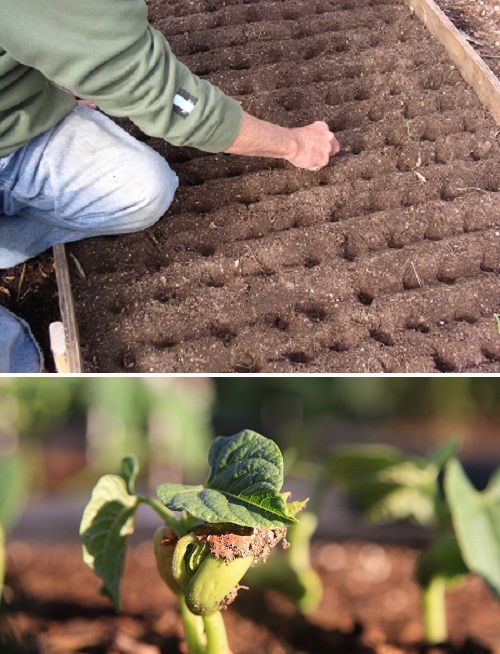

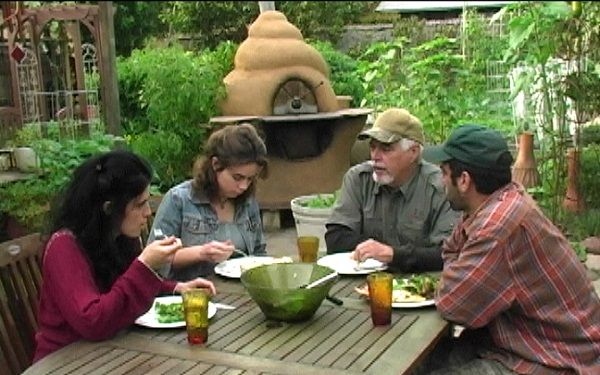
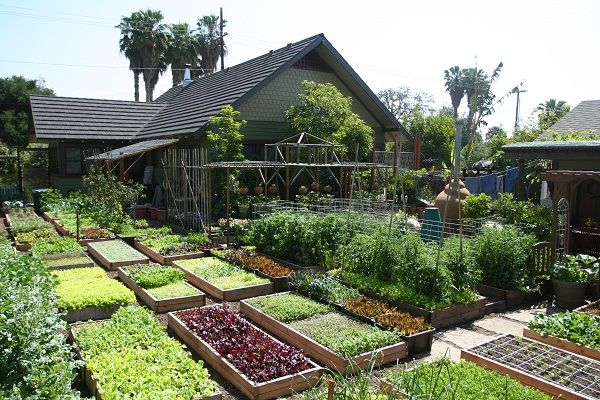
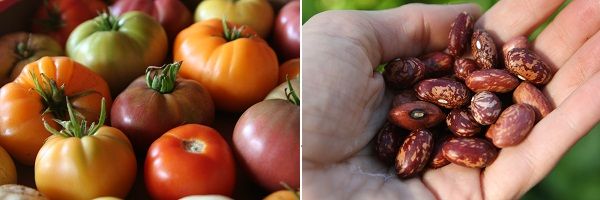
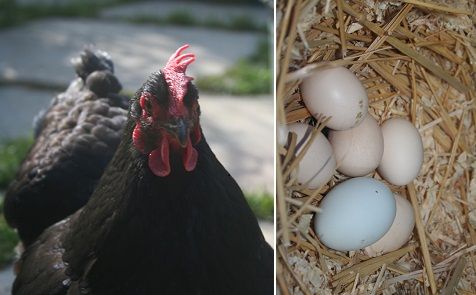
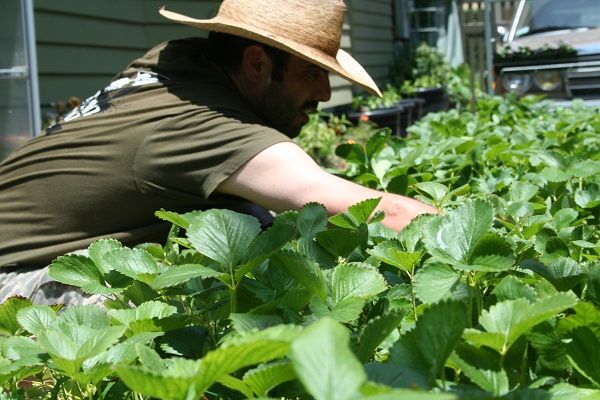
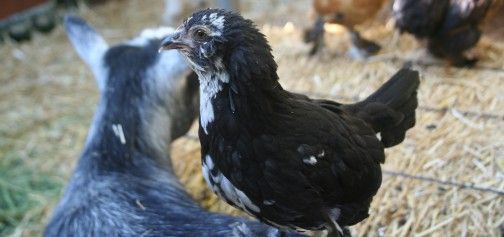

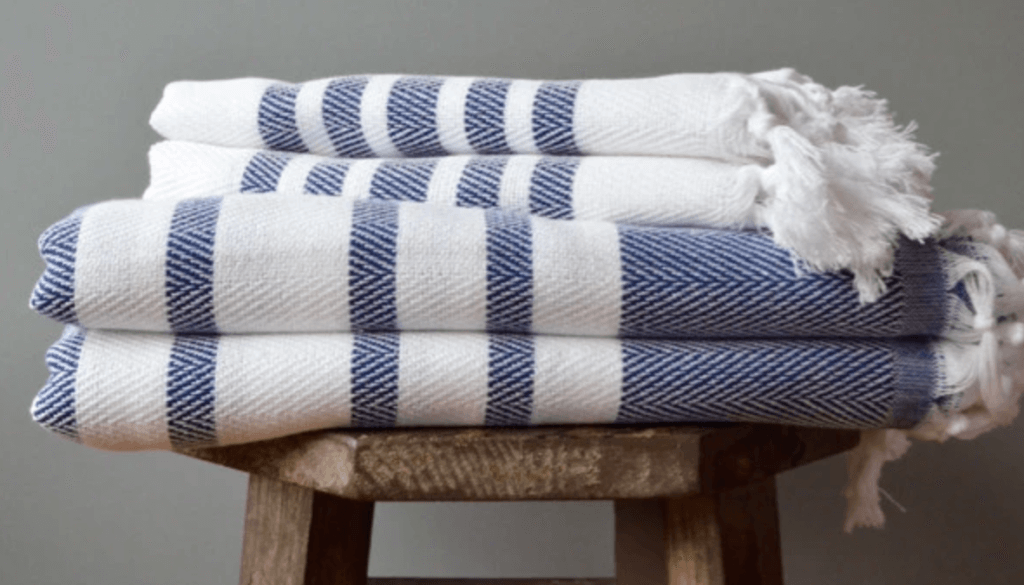

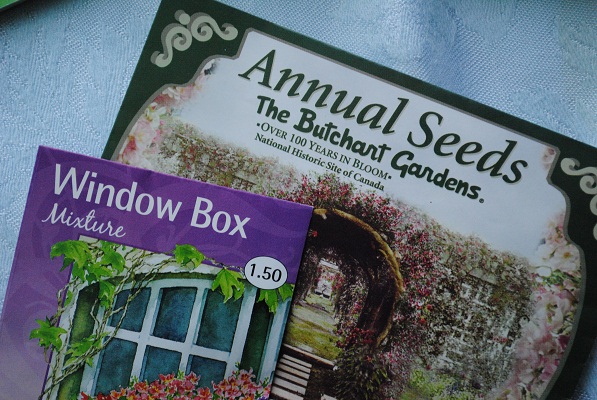



Well this is fine and dandy for a California resident, but what about those of us in Canada, Calgary to be specific..we have a 90 day growing season…. You’d have to greenhouse your whole back yard to get enough heat to grow a few tomatoes, never mind produce enough food to feed your family for a year. He says there’s challenges there too, but try doing that with a 90 day growing season!!! I wish I could just walk away and move somewhere warmer, but I can’t. I’m stuck here.
There are for sure solutions if we search for them… at the moment there is a shift in thinking, this will produce a creative energy that can help the movement along a sustainable path. I believe there will be a time most people will have to grow their own food or risk being at the mercy of food supplier’s choices and price plans. Loved the interview it’s absolutely needed for us to talk about better urban planning.
mashaAllah. Thanks for sharing.
There was a time not long ago when what you ate came only from your own garden or from farmers close-by. Returning to that way of life is full of benefits and is do-able, but like any change, can take much research and trial and error, personally, to learn a new way. It can also be uncomfortable. But the rewards? Skills and knowledge that no one can take away, the ability to grow what you need to eat and a confidence that you can do what you set out to do. I find the Derail family inspiring-we r in the process of turning our front yard into a garden with fruit trees, in Las Vegas, of all places. It can be done, several people I know here do well in their own urban homesteads. (added by Mobile using Mippin)
This is the Dervaes livelyhood. They are trying to inspire people to do the best with what you have and to think outside the box.
Excellent, excellent interview!! You sure did ask things I would ask!! 🙂
I’ve been aware of the Dervaes family’s farm for a few years as they are about 45 minutes away and, well, people talk!! 🙂 I think their message is to use what you have where you are, they can do what they do because they can. We rent and can’t turn our property into a farm, but we do have a 6×6 garden and one chicken. We’re getting corn, basil, tomatoes, melons, lettuce and various peppers as well as eggs!! And, when we didn’t have any garden or chicken we bought as much organic as we could to avoid the chemicals and GMOs that are in so much “fresh” produce.
Their message is so inspiring and I’m so glad you got to interview them!! I read your interview and went out to tend to our garden just to be out there and be thankful for what we have!! They are truly pioneers in self-sufficiency and if they inspire others to change even a few things I think that’s what it’s all about. Thank you so much!!!
To AlbertaGreekGirl – Take a look at the books from Elliot Coleman – He raises many types of vegetables year round yet live in the State Of Maine. You can do much with a simple Cold Frame or Hoophouse.
There are several, but here is an example from Amazon http://www.amazon.com/Four-Season-Harvest-Organic-Vegetables-Garden/dp/1890132276/ref=sr_1_2?ie=UTF8&s=books&qid=1278954621&sr=8-2
I confess, I have not came to this blog in a long time. still it was another delight to read your excellent content.
wow beutiful house
thanks for sharing this.
It’s like dream … Thanks for the interview. I remember watching them on the T.V. I had the same admiration that I had now. For me it would be very difficult to do what they do because it very hot in Houston. I was Gardening when I lived in Chicago…